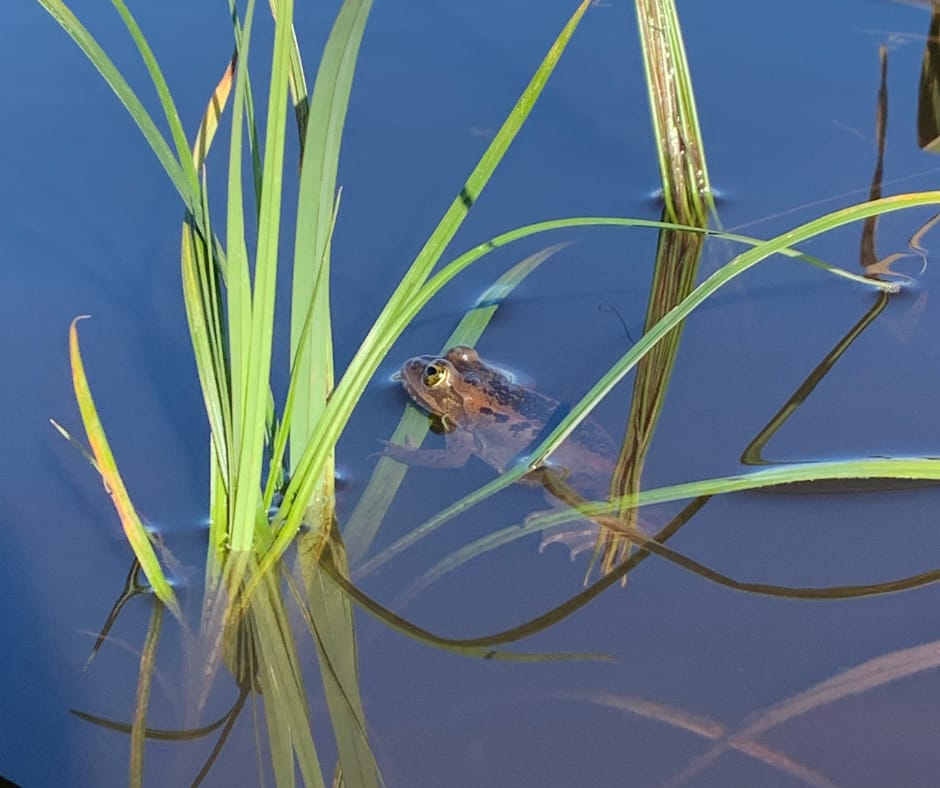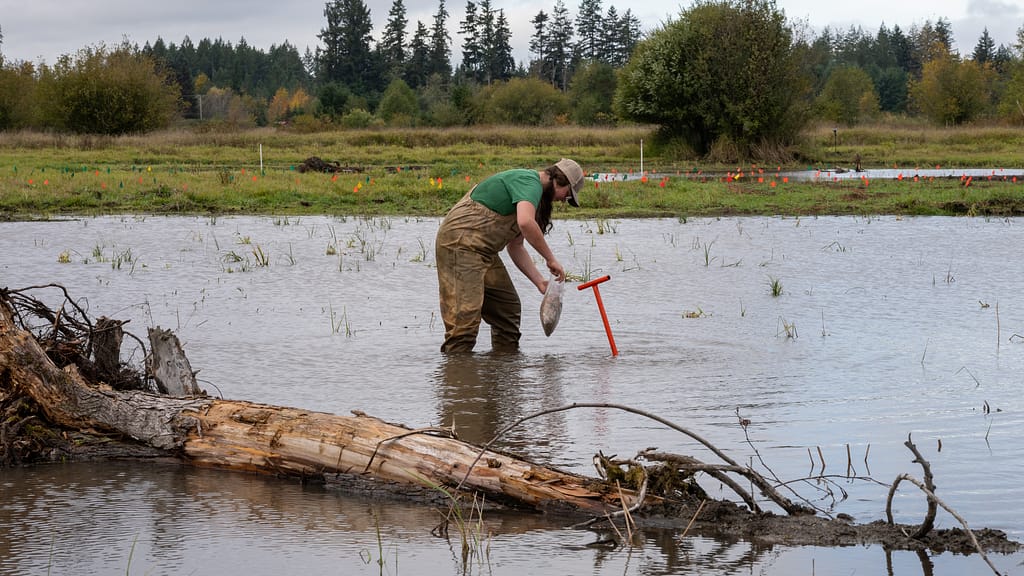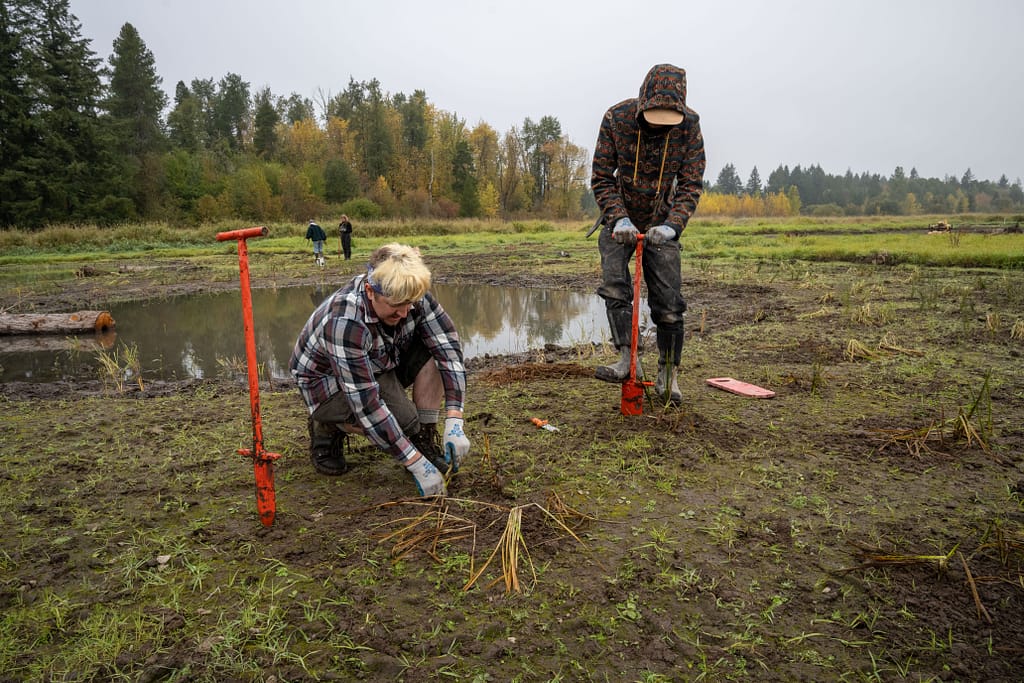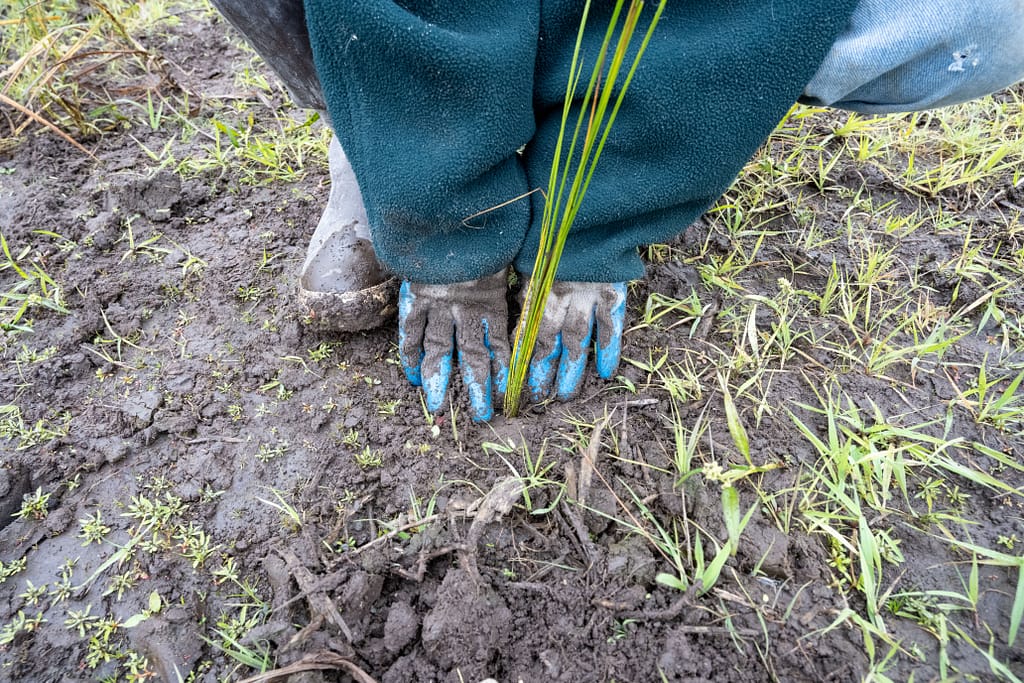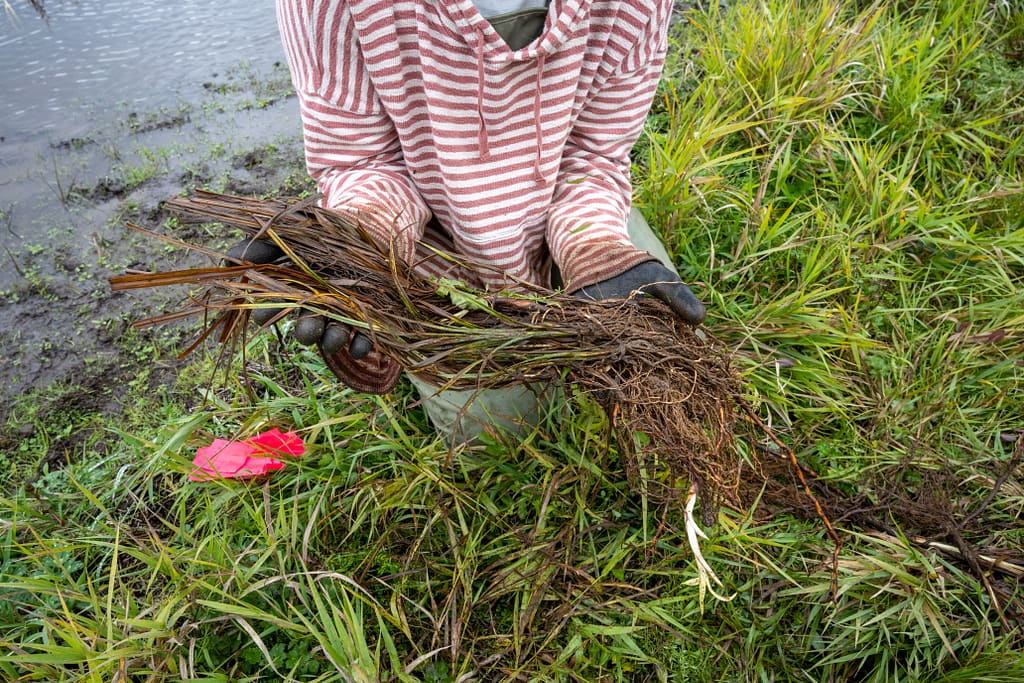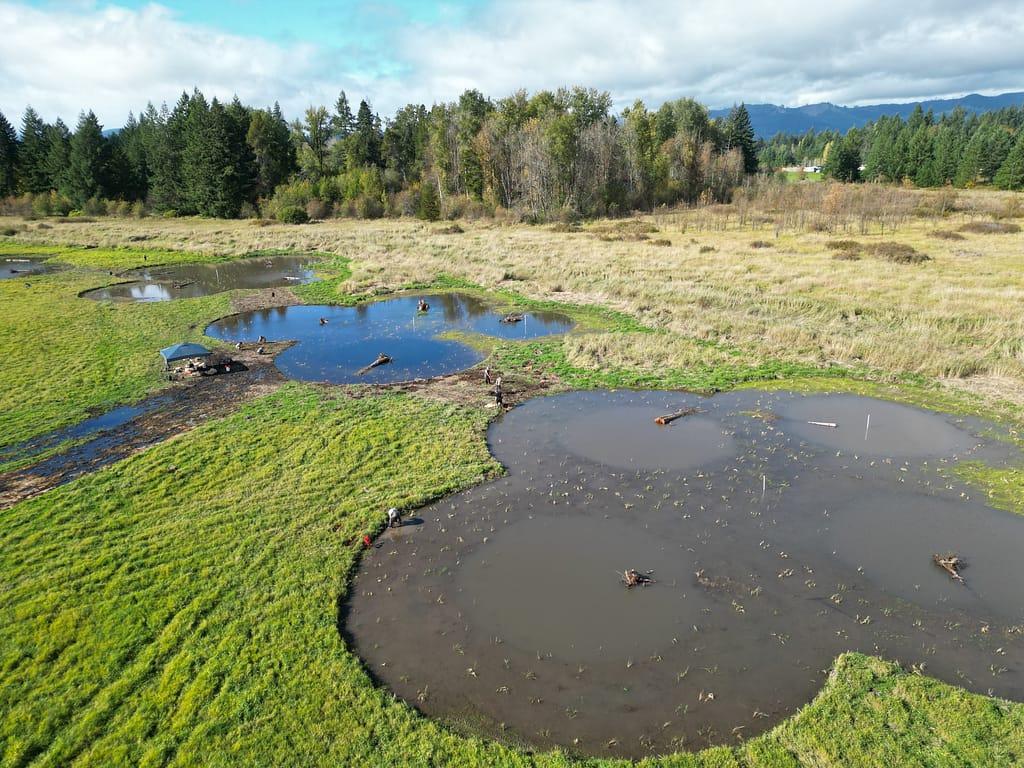It was one of those rainy fall days where the fog clings low to the earth, highlighting the bold fall colors on nearby trees. It is in this serene setting that a crew from Sound Native Plants has planted nearly 40,000 native plants around newly constructed frog ponds and along Blooms Ditch.
Access to healthy wetland habitat is a challenge faced by endangered Oregon spotted frog populations throughout the Black River Ecoregion, including Capitol Land Trust’s Blooms Preserve. The new native plants in the project area are intended to help improve the frog’s breeding and summer habitat by competing with invasive reed canary grass. The grass is tenacious and quickly takes over wet areas. Growing up to nine feet tall, its dense stands block out sun exposure and low vegetation structure that the frogs need in their breeding habitat.
Even still, the population of Oregon spotted frogs at Blooms Preserve persists. And, one has been “spotted” floating on the new vegetation.
- Oregon spotted frog found in new ponds, Ethan Hill.
Sound Native Plants crew leader Apollo Stone explains more about the project and about the nemesis of reed canary grass … shade.
“Native plants can help shade out reed canary grass and prevent it from seeding. If we can increase the amount of native vegetation in this area, the value the wetland has for the frog goes way up. By planting native sedges, rushes, grasses, shrubs, trees, and other plants around the frog ponds and Blooms Ditch, we hope to start outcompeting the grass.”
With the needs of the Oregon spotted frog and the weakness of the reed canary grass in mind, planting began in September 2023. Planting started in the middle of the ponds and expanded outwards, eventually reaching Blooms Ditch.
Plants in a category known in the botany world as “emergents” were used within and around the ponds. Emergent plants grow along the shoreline and stand above the surface of the water. The aquatic-bed plant species Wapato, also known as duck potato and Sagittaria latifolia, was an interesting part of the planting process. Crew members stuck their hands into water as deep as their arms were long and squished the bulbs into the mud. The roots of the emergents will grow together and start forming a barrier from the reed canary grass.
- Sound Native Plants crew member planting wapato.
- Planting emergents along the new ponds.
Just outside of the emergent area, thousands of live stakes were installed. Live stakes are parts of branches from other trees and shrubs that, once planted, will grow into a whole new plant. The thousands of willow and black cottonwood live stakes will grow quickly to provide shade against the reed canary grass.
- Sound Native Plants crew installing live stakes.
- Live stakes along a new pond.
Native plants are at the base of any food web, which is how energy moves through an ecosystem. In the case of Blooms Preserve, native plants move energy from the sun to herbivores like some insects. Those insects are then eaten by adult Oregon spotted frogs who are in turn eaten by animals like herons and kingfishers. Each element of this system is an important piece in the resiliency of the site and the frog population to climate change and other impacts.
Apollo says, “The best way to contend with reed canary grass is through shade and limiting seed production. It’ll be a long road due to the competitive nature of the grass, but if there is something we can do to help the wetland recover, we have to try.”
The benefits of healthy wetlands don’t stop with wildlife. Wetlands on preserved properties like Blooms Preserve provide healthy, life-supporting benefits to people too. Wetlands filter drinking water, store floodwater, and ultimately contribute to our exceptional quality of life in the South Puget Sound.
Capitol Land Trust Executive Director Dave Winter acknowledges, “Every acre we conserve helps reverse habitat loss and provides permanent homes for nature’s residents. People are residents of nature too and benefit from projects like Blooms Preserve. Clean water and open space are things people in our community need and care about. The recent milestones of this project move us closer to ensuring that is provided, forever.”
This project was made possible through collaboration with partners that are invested in making a difference in the future of the Oregon spotted frog. Capitol Land Trust members make these projects possible by donating their time, funding, and expertise. Make a significant and permanent difference to the health of our lands, waters and biodiversity by making a gift today!
- Pond clusters at Blooms Preserve after planting.
Additional Support
Funding for the restoration project came from the Washington Coastal Resilience and Restoration Initiative and the Chehalis Basin Aquatic Species Restoration Plan. Funding for the conservation of Blooms Preserve came from the WA Salmon Recovery Funding Board, Thurston County Conservation Futures, Black Hills Audubon Society, and the Doris Duke Charitable Foundation. Additional support came from the Center for Natural Lands Management, Salix Environmental Services, Streamline Earthworks, LLC, US Fish & Wildlife Service, Waterfall Engineering, WA Department of Fish and Wildlife, and of course, Sound Native Plants.


